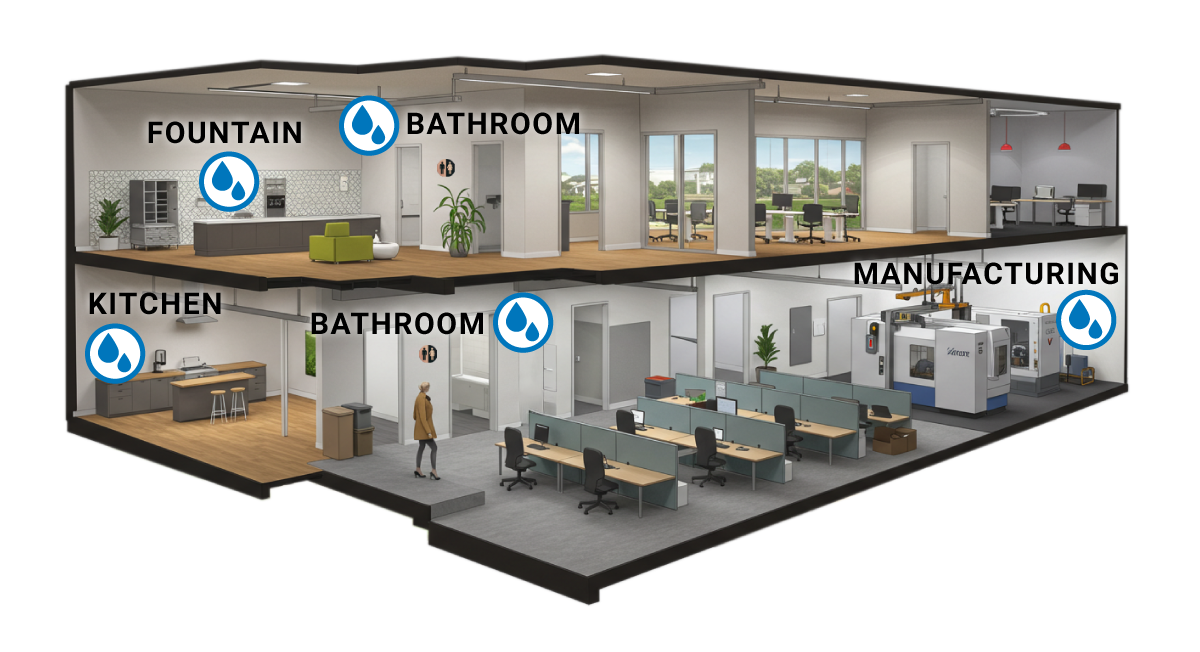
In the previous blog “The Impact of Modern Leak Detection on Property Insurance”, the significant financial impact of water damage on commercial properties was highlighted. From extensive property damage to debilitating business interruptions, unchecked water can lead to significant losses. This post delves into the specific threats businesses face from water intrusion and explores how modern leak detection technology addresses these challenges.

Water-related incidents are one of many perils that can strike commercial buildings, regardless of size or sector. These typically include gradual water leaks going undetected for long periods of time if buildings are unoccupied, including weekends. Water or sewer backup which occurs when water or sewage from a municipal sewer system or a building’s drain system backs up into the property. Burst pipes involving the sudden and high-volume release of water due to pipe failure or surface water entering from the exterior such as from a heavy rain or overflowing gutters.
The consequences of these incidents translate into comprehensive insurance claim categories:
Water’s presence in practically every commercial facility means potential leak sources are as varied as the building types they reside in:

Process Water Systems: In manufacturing, laboratory, or industrial settings, complex systems carrying water for specific processes are a common source of leaks. Failures in valves, pipes, or connections within these systems can lead to rapid and extensive damage.

Standard Plumbing Fixtures and Appliances: Everyday plumbing, including bathrooms, breakrooms, kitchens, and utility sinks, frequently contribute to water damage. Leaks can stem from faulty supply lines, overflowing toilets, or malfunctioning appliances like water heaters and dishwashers.

Infrastructure and Maintenance Issues: Outdated water lines, corroded connections, deteriorating fixtures, and the cumulative effects of vibrations or rubbing can compromise system integrity over time, leading to unexpected failures.

Environmental Factors: While the focus for this discussion remains on sudden internal breakages, it is important to acknowledge that extreme weather events like freezing temperatures leading to burst pipes, or significant rainfall causing surface water intrusion, can also contribute to water damage claims.
Special consideration for insurance risk assessment is given to vacant commercial properties or even unoccupied sections within active buildings. The absence of regular human presence dramatically increases the risk of water flowing unimpeded for days or even weeks, leading to significantly more extensive and costly damage. This increased risk often results in specific coverage requirements including mandating modern leak detection systems or imposing higher premiums.

Today’s leak detection sensors act as vigilant guardians, providing real-time intelligence and alerts that alter the outcomes of water incidents. Some of the features they offer are:
Understanding the most common risks and solutions provides a comprehensive picture of water damage prevention. Beyond protection, these intelligent systems offer a proactive and effective defense in addition to significant financial advantages that can directly impact a business’s bottom line.
In the final post of this series, “Insurance Savings, Discounts, and ROI with Leak Detection Systems,” we will delve into the specific premium credits, deductible reductions, and cover a multi-million dollar case study that demonstrates how modern leak detection systems can be a strategic investment.
Unlock the full potential of leak detection for your building.
Read part 1 in the leak detection series: The Impact of Modern Leak Detection on Property Insurance
Read part 3 in the leak detection series: Smart Savings, Insurance Discounts & ROI with Leak Detection
Developed in partnership by UBX (Scalable smart building platform) and Elliott, Powell, Baden & Baker (leading insurance provider in the Pacific Northwest), this blog series aims to raise awareness of the risks associated with water leaks and the benefits of their early detection.